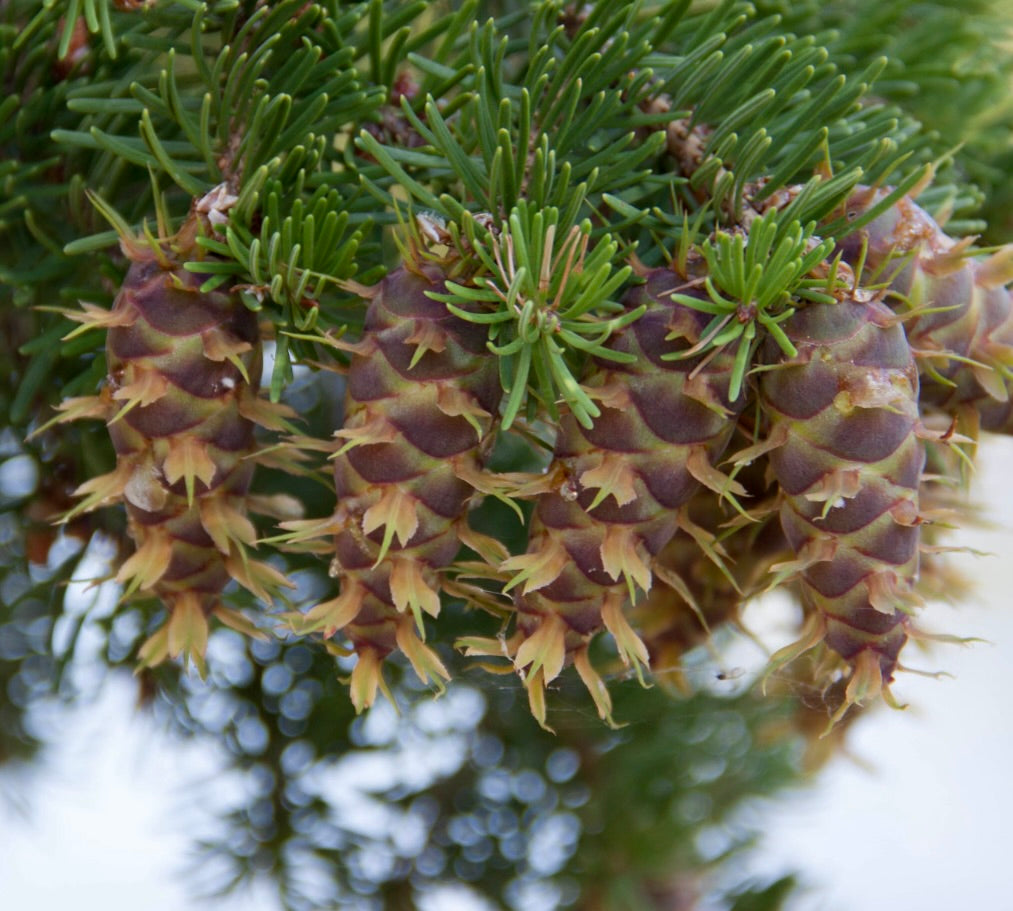- Catalogue Plants
Pseudotsuga menziesii
Pseudotsuga menziesii
Couldn't load pickup availability
Plant Description
Pseudotsuga menziesii, commonly known as Douglas fir, is a majestic coniferous tree native to western North America. Its name honors Scottish botanist David Douglas, who extensively studied the flora of the Pacific Northwest in the 19th century. Douglas fir is renowned for its impressive size, straight trunk, and symmetrical shape, making it a popular choice for timber production as well as ornamental landscaping.
Douglas fir trees typically reach towering heights of 200 to 300 feet (60 to 90 meters) in their natural habitat, although cultivated specimens may be smaller. The tree features dense, needle-like foliage arranged in spirals around the branches, with cones that hang downward from the uppermost branches. Its bark is thick, rough, and deeply furrowed, providing protection against wildfires and other environmental stresses. The wood of Douglas fir is prized for its strength, durability, and versatility, making it valuable in construction, furniture making, and paper production.
Cultivation:
- Climate: Douglas fir thrives in temperate climates with cool, moist conditions. It prefers well-drained soil and ample rainfall but can tolerate a wide range of soil types.
- Sunlight: Plant Douglas fir in a location that receives full to partial sunlight for optimal growth. Ensure adequate spacing between trees to allow for proper air circulation and sunlight penetration.
- Watering: Provide regular watering, especially during dry periods, to keep the soil consistently moist but not waterlogged. Newly planted trees require more frequent watering until they become established.
- Mulching: Apply a layer of organic mulch around the base of the tree to retain moisture, suppress weed growth, and insulate the soil. Avoid piling mulch against the trunk to prevent rot and disease.
- Pruning: Prune Douglas fir trees selectively to remove dead or diseased branches and maintain a desirable shape. Avoid heavy pruning, especially during the growing season, as it can stress the tree and inhibit growth.
- Fertilization: Fertilize Douglas fir trees sparingly, if at all, as they are relatively low-maintenance once established. If necessary, apply a balanced fertilizer in early spring to promote healthy growth.
- Pest and Disease Control: Monitor trees regularly for signs of pests such as aphids, spider mites, and bark beetles, as well as diseases like root rot and needle blight. Promptly address any issues with appropriate treatments to prevent widespread damage.
By following these cultivation tips, you can successfully grow and enjoy the beauty of Pseudotsuga menziesii in your landscape or woodland environment.
IMPORTANT: Please be aware that picture 1 show adult plant not for sale, the offer is for a plant in the dimension indicated in title description.
Botanical family: Pinaceae
Botanical genus: Pseudotsuga
Botanical species: Pseudotsuga menziesii
SKU:BA-2127-S
Cultivation
Cultivation
Info and Disclaimers
Info and Disclaimers
Plant Height:
Plant Diameter:
Pot Size:
Grafted/Not Grafted:
Disclaimer: Be aware that most plants change across seasons. If present foliage, could have been fallen or change in its color.


